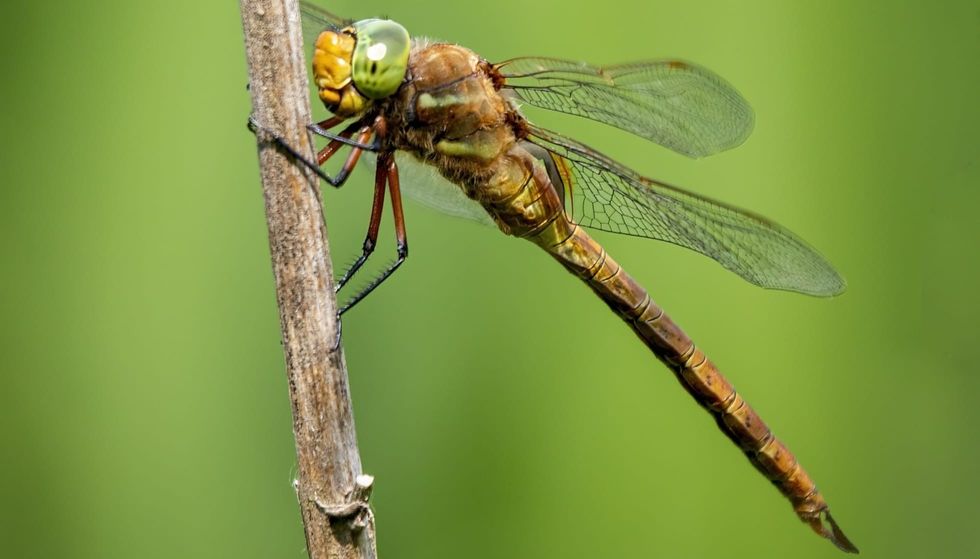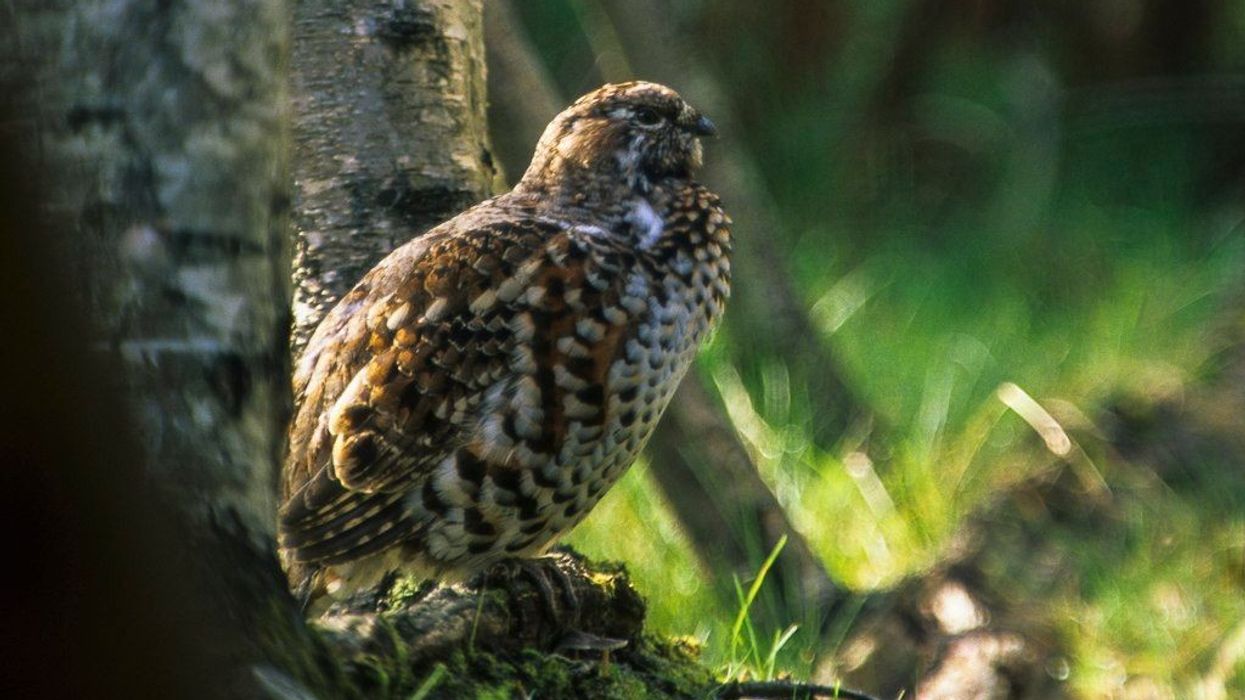The Norfolk Hawker, also known as the green eyed Hawker or by its scientific name Aeshna isosceles anaciaeschna isosceles is a small hawker dragonfly. It is one of the two brown hawker dragonflies found in Britain which falls in the class order Odonata.
The Norfolk Hawker or Aeshna isosceles is widely distributed in lowland areas of southern and central Europe, south to North Africa, but in Britain, it has always been scarce and local species of dragonfly and is protected under the Wildlife and Countryside Act,1981. In Britain, it can be found found in the Norfolk Broads and northeast Suffolk.
They can be found living in unpolluted fens, marshes, and ditches.
It has a yellow triangular mark near the second abdominal segment of its body which helps with its identification. it is 2.6 in (67 mm) in length and its flight period is from May to August.
They are best spotted in the months of June and July. It appears very similar to the damselflies.
Norfolk Hawker Cricket Interesting Facts
What type of animal is a Norfolk Hawker?
The Norfolk hawker is a dragonfly.
What class of animal does a Norfolk Hawker belong to?
The Norfolk hawker falls into the class of Arthropod. It further falls under the higher class order Odonata.
How many Norfolk Hawkers are there in the world?
The Norfolk hawker is a rare species of dragonfly and the exact number of Norfolk hawker has not been recorded yet but these dragonflies are best spotted in June and July.
Where does a Norfolk Hawker live?
The Norfolk hawker is found in the Norfolk Broads and northeast Suffolk in the UK.
What is a Norfolk Hawker's habitat?
The Norfolk hawker dragonflies can be found in unpolluted fens, marshes (pond like waterbody), and ditches where the water soldier or other plants or vegetation is growing.
Who do Norfolk Hawkers live with?
The Norfolk Hawker dragonflies live in a swarm (a large dense group) and are territorial in nature.
How long does a Norfolk Hawker live?
Like any other dragonfly, Norfolk hawker dragonflies survive for 7-56 days.
How do they reproduce?
The process of breeding takes place on emergent vegetation like the water soldier or on unspoiled grazing marsh dyke systems with clean and non saline water.
Males get involved in a dog fight to pick the right mating site to attract most females.
Then the female lays its eggs which hatch in a period of a few days or weeks (the male stays on its wing, hovering over the marsh which looks similar to a pond while the female lays its eggs to protect it from other males).
After hatching the babies come out as nymphs which stay underwater for two to four years where they act as aquatic predators and eat any smaller (sometimes bigger) organisms.
They stay in the larval state for most of their life which for some can be two to three years. Then the mature dragonfly larvae emerge to the surface of the aquatic plants or vegetation at night.
Early morning, the mature larvae shed its exoskeleton to grow wings and become a dragonfly and fly off to feed.
What is their conservation status?
According to the IUCN, the Norfolk hawker falls under the category of Least Concern. Regardless of its status evaluated by the IUCN, it's a rare dragonfly in Britain due to its scarcity the conservation status given to it by the Statutory Nature Conservation Bodies (UK) is Endangered and is protected under the Wildlife and Countryside Act, 1981.
Norfolk Hawker Fun Facts
What do Norfolk Hawkers look like?
A Norfolk hawker is a dragonfly that has a brown body, green eyes, clear wings, and a very distinctive yellow triangular mark near the top of its abdomen it is 2.6 in (6.6 cm) in length. They resemble their closest cousins' damselflies.
The waist segment of the male dragonfly's body is narrow in comparison to the female but it has brighter shoulder stripes in comparison to those of the female.
The scientific name of the Norfolk hawker dragonflies is Aeshna isosceles is short for Anaciaeschna isoceles. As nymphs live underwater, they will eat any organism they can and will also resort to cannabilism if they have to, eating other nymphs.
Adults of this species refrain from staying on their wing and will fly around to guard their territory against other male adults. Males of dragonflies are extremely territorial in nature, they will fight wildly with other dragonflies of the same and different species to pick the best egg laying site to attract the most females.
It also stays on its wing to hover around the marshes to protect its territory. The eating habits of an adult dragonfly remain the same as a larva, it can eat other dragonflies as well as damselflies.
Also, dragonflies and damselflies are very similar in appearance.
It is one of the two brown hawker dragonflies found in the UK. At its early stages of development, the nymph has to protect itself from larger predators or sometimes even larger nymphs.
A dragonfly can stay on its wing and hover in the sky at the same position. The flight period of this species lasts from May to August.
These dragonflies can be spotted from June to July. After the nymphs shed their skin early morning They wait for some time for their new body to harden in the sun and then they fly off to feed.

How cute are they?
People are generally frightened of Insects and do not consider them cute because of the fear of being bit or stung. Although The Norfolk Hawker only bites on feeling threatened, it never breaks the barrier of the skin and is not dangerous at all.
An adult dragonfly can be very colorful and sometimes frightening because of the sound of its wings.
How do they communicate?
The Norfolk Hawker dragonflies use their shocking blue, green, purple, and even bronze hues to send messages to other insects and are sometimes used to warn of predatory birds.
How big is a Norfolk Hawker?
The Norfolk Hawker or known by its scientific name Aeshna isosceles is 2.6 in (6.6 cm) in length which is eight times smaller than a kagu.
How fast can a Norfolk Hawker move?
When in flight, a Norfolk hawker can fly up to the speed of 22 mph (36 kph).
How much does a Norfolk Hawker weigh?
A Norfolk hawker dragonfly can weigh somewhere around 0.04 oz (1000 mg).
What are the male and female names of the species?
There are no specific names for the different sexes of the species.
What would you call a baby Norfolk Hawker?
The name of a baby Norfolk hawker is larvae or nymphs.
What do they eat?
Dragonflies will any insect they can grab hold of, this includes flies, midges, mosquitoes, and damselflies, or any other insect usually smaller to them, but sometimes they even catch and eat insects bigger in size like butterflies.
Are they dangerous?
No, a bite from a Norfolk Hawker or any other dragonfly cannot penetrate the human skin and it is not dangerous at all.
Would they make a good pet?
No, it would not make a good pet because is an endangered species that is protected under Wildlife and Countryside Act, 1981.
Did you know...
The overall life span of a dragonfly from birth stretches for about four to five years.
Is the Norfolk Hawker only found in Norfolk?
No, the Norfolk hawker is found in the Norfolk Broads as well as northeast Suffolk and is a local to The UK.
Are Norfolk Hawkers rare?
Yes, the Norfolk hawker is a rare dragonfly and is declared an Endangered species in the UK. It is only found (distribution) in marshes and ditches of Broads National Park, Norfolk, and northeast Suffolk. It is protected under the Wildlife and Countryside Act, 1981.
Here at Kidadl, we have carefully created lots of interesting family friendly animal facts for everyone to discover! For more relatable content, check out these Mormon cricket facts, or mole cricket facts pages.
You can even occupy yourself at home by coloring in one of our free printable Norfolk hawker coloring pages.









